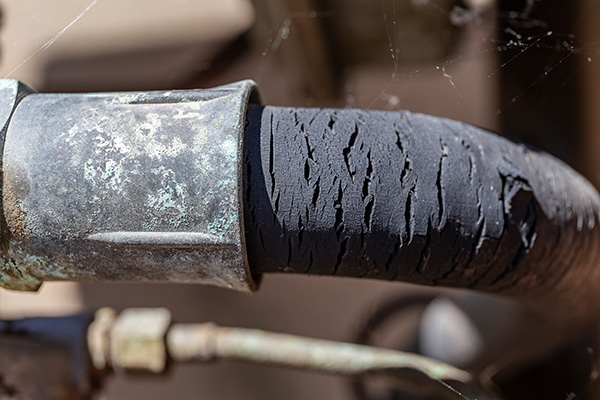
Radiator hoses might not be the flashiest part under your hood, but they play a vital role in keeping your engine from overheating. These rubber hoses carry coolant between the radiator, engine, and heater core, helping regulate temperature and protect internal components. When a radiator hose starts to crack, leak, or swell, it’s only a matter of time before it fails, and that can leave you stranded or facing a serious repair bill.
Most of the time, problems with hoses can be caught early with a quick visual inspection and a little pressure testing. Taking a few minutes to check them, especially before a long trip or seasonal temperature swing, can help prevent a lot of hassle later.
What Radiator Hoses Actually Do
There are typically two main radiator hoses in most cars: an upper hose and a lower hose. The upper hose carries hot coolant away from the engine and into the radiator. The lower hose returns the cooled fluid back to the engine. Together, they form a loop that helps maintain a steady engine temperature.
These hoses need to withstand both high temperatures and pressure. Over time, the rubber can break down from age, exposure to heat, and chemical reactions inside the cooling system.
Common Signs a Radiator Hose Is Failing
If a radiator hose fails while you’re driving, you may notice the engine temperature rising rapidly. In some cases, the hose may burst completely, spraying coolant into the engine bay or onto the ground. But there are usually warning signs before things get that serious.
Here are a few things to watch for:
- Swelling or bulging in the middle or near the clamps
- Visible cracks or splits, especially near the ends
- Dried coolant residue or wet spots around the hose
- A strong, sweet smell coming from under the hood
- Coolant levels dropping without an obvious leak
If you notice any of these issues, it’s best to have the hoses checked and replaced before they cause bigger problems.
How to Check Radiator Hoses at Home
Let the engine cool completely before inspecting the hoses. Opening a hot cooling system is dangerous and can cause burns from steam or boiling fluid. Once it’s safe, open the hood and locate the radiator hoses. You’re mainly looking at the large rubber hoses connected to the radiator and engine.
First, check for visible signs of damage like cracks or wet spots. Then, gently squeeze each hose. It should feel firm but flexible. If it feels overly soft, spongy, or brittle, it’s likely degraded and should be replaced. A swollen or ballooned hose can indicate internal separation of the hose layers, which is another sign of failure.
Don’t forget to check the hose clamps. If they are loose or show signs of corrosion, they may not be sealing properly. Replacing old clamps is a simple way to improve hose reliability.
When to Replace Radiator Hoses
Radiator hoses typically last anywhere from 5 to 7 years, but that can vary based on driving conditions, climate, and maintenance history. It’s a good idea to inspect them at every oil change and replace them at the first sign of wear.
Many technicians also recommend replacing both upper and lower hoses at the same time, even if only one is showing signs of aging. This helps avoid a situation where you replace one hose and then deal with the other failing soon after.
If you’re already having your cooling system flushed or serviced, it’s the perfect time to inspect and replace any hoses that are near the end of their lifespan.
Don’t Forget the Heater Hoses
While the main radiator hoses are easier to spot, your vehicle also has smaller heater hoses that carry coolant to and from the heater core. These are just as important, especially in colder months when you rely on your heater for comfort and visibility.
Heater hoses can develop leaks or cracks in hidden areas, so it's a good idea to have them checked by a technician even if you're not seeing visible issues.
Cooling System Pressure Testing
A professional pressure test can reveal leaks that aren't obvious during a visual inspection. This involves pressurizing the cooling system to simulate normal operating conditions and watching for pressure drops or fluid leaks. It’s an effective way to catch small hose cracks or connection problems before they become major failures.
Have Your Cooling System Checked at H B Auto & AC in Huntington Beach, CA
If your radiator hoses are showing signs of age, or you just want peace of mind before your next trip, bring your vehicle to H B Auto & AC in Huntington Beach. Our team can inspect your entire cooling system, test for pressure leaks, and replace any worn or damaged hoses.
Don’t wait for a breakdown on the side of the road! Schedule your cooling system check today and keep your engine running cool and safe.